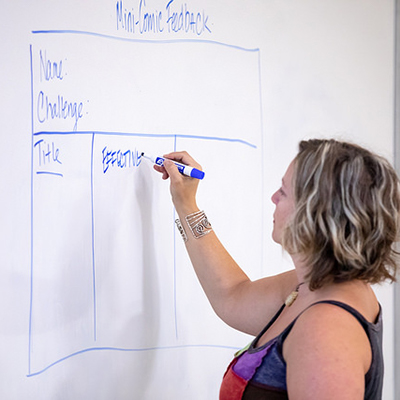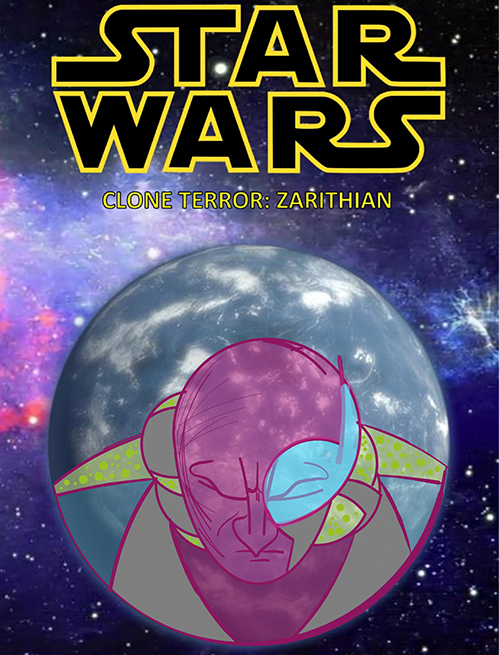Comic Books in the Classroom
Associate Professor Riki Thompson's "Writing through Comics" course gets students to think differently about the genre.
There is no one way to tell a story, though for some time the written word has been the dominant form. “Politically and historically we have valued the written word even though historically the majority of the world has not had that kind of literacy,” said UW Tacoma Associate Professor Riki Thompson.

Thompson is a self-described “hobbyist cartoonist” and developed the idea for a course involving comic books four years ago while she was on sabbatical. While on sabbatical she took a summer workshop on making comics at the Center for Cartoon Studies in White River Junction, Vermont. Thompson found herself traveling a lot, cartooning her story, and posting the comics to her blog. “Someone suggested I teach a class about using comics to tell stories,” she said.

Thompson first taught “Writing through Comics” (TWRT 333) two years ago and offered it again this summer. “I have been teaching a class called Written and Visual Rhetoric (TWRT 330) for years,” said Thompson. “That class teaches you how to analyze the power of images and text in the world whereas the comics class teaches you how to apply images and texts to tell stories.”
The comic book and graphic novel industry is big business. Last year more than a billion dollars’ worth of comics and graphic novels were sold in North America. Four of the 10 highest grossing films of all time are movies based on comic book characters. “Comics are often thought of as childish or for kids but over the past 20 years the genre has become extremely popular with adults,” said Thompson.
Comics are more than just superheroes fighting evildoers. The genre has been used to discuss everything from the Holocaust to mental health. “Comics can be a really effective teaching tool,” said Thompson. She gives the example of a student who is weary of reading Shakespeare. “What if we gave them a comic version of Shakespeare to amend the traditional reading,” she said. “Now all of the sudden it’s a little bit more accessible and familiar.”
Students in Thompson’s class utilized textbooks and readings to understand the craft of creating an effective comic. “This is a still media, so how do you deal with time and motion?” she said. “We look at how to utilize visual storytelling elements to help readers understand the story.”

At the end of the four-week summer session students turned in a mini-comic on a subject of their own choosing. UW Tacoma senior Michael Hong created a Star Wars spinoff for his project. “This class gave me the opportunity to stretch my creative mind,” he said. Fellow UW Tacoma senior Cynthia Bennett made a detective story involving animals for her project. “I wanted something that was fun and whimsical,” she said.
Both Hong and Bennett appreciated the opportunity to workshop their mini-comics with fellow students. Each day students brought in drafts of what they were working on to discuss what worked and what needed tweaking. “I enjoyed sharing my ideas with the class and felt it helped me move the story forward,” said Hong.
The course also included student-led discussion. “Writing studies classes aim to help students learn to be flexible writers who can communicate in different contexts,” said Thompson. “For that reason, this class included creative and formal academic writing as well as presentations.”
Thompson’s decision to include different communications approaches is at the core of “Writing through Comics.” “People learn best when they’re engaged through multiple modes,” she said. “It is to the benefit of our students that we teach them to be critical and analyze the messages around them.”
As Thompson points out, “visual stories are everywhere.” Social media is alive with images as is daily life. “You see it on signs – on bathroom doors,” said Thompson. “The fact that we have used cartoons like Schoolhouse Rock to amend grammar school education for America’s youth, The Cartoon Guide to Algebra to teach math to teens, and whiteboard cartoons like RSAnimate to teach adults about topics such as Changing Education Paradigms and The Power of Networks speaks volumes about the potential of comics to educate.”



